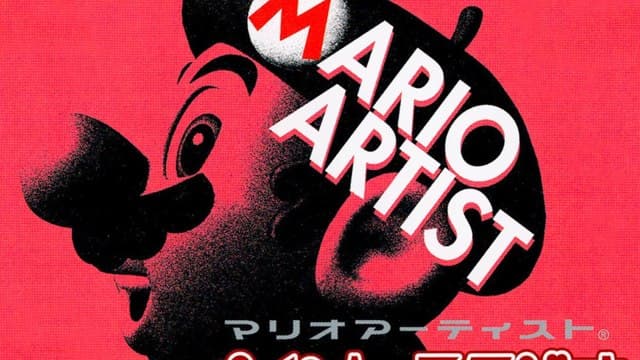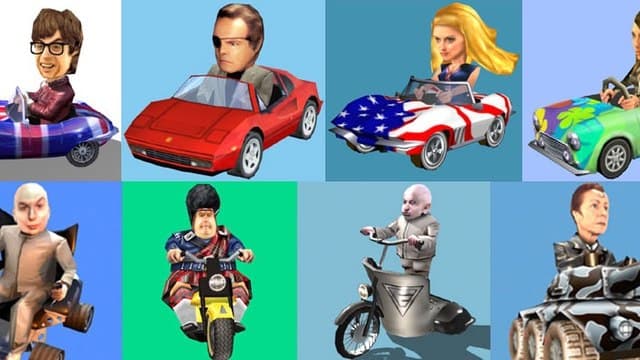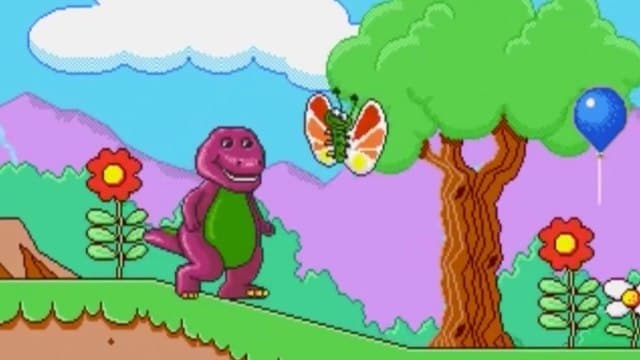E.T. for the Atari 2600 is one of the most infamous video games in history — the title is often held up as the last straw that ended the first video game boom and led to truckloads of cartridges being dumped in the New Mexican desert. But while it’s certainly the highest profile video game flop based on Steven Spielberg’s character, it’s not the only time a project based on the alien has ended in disaster.
In 2001, New York publisher NewKidCo acquired the license for E.T. from Amblin and Universal. NewKidCo was primarily known at the time for releasing games based on children’s properties such as Tom & Jerry, Dragon Tales, and Sesame Street, but the publisher had big plans for the little alien. They wanted to release a heap of video games about the character to capitalize on the film’s upcoming 20th anniversary. But this didn’t go according to plan. NewKidCo overstretched themselves and ran out of money, releasing only seven of the ten E.T. games it had in production. This had disastrous effects for the studios involved, who had worked for months on their respective games and were owed a backlog of milestones. Not a lot is known about these three cancelled games or the circumstances surrounding their cancellation, so I set off in search of more details, talking to both those who worked at NewKidCo and the developers themselves.
NewKidCo on the Block
In 1998, Hank Kaplan and Dan Feinstein got together to form NewKidCo. Both had previously worked together at another video game publisher, Hi Tech Expressions, which was known primarily for releasing games marketed towards children. The plan for NewKidCo was to do the same again, using their existing connections from Hi Tech to gain access to popular children’s characters.
“Hank, with his licensing relationship with Sesame Workshop (then Children’s Television Workshop), understood with the Sony PlayStation entering mid-late schedule and coming down in price, the console audience would open up to younger players,” says Seth Rosenfeld, a former senior producer at NewKidCo. “Hank and Dan essentially started the company with two Elmo games for N64 and then broadened the scope to include more licensing partners brought in from Hi Tech. I came in as a second senior producer after Dan. He was my executive producer at Acclaim, not to mention a good friend and a mentor.”
In the early days, NewKidCo worked on a number of tie-in titles for properties such as Sesame Street, Hello Kitty, Mulan, and Doug. With the list of projects growing, the publisher took on overseas development partners to fulfill their obligations, including a large number of developers based in Europe. To make sure everything went to plan, NewKidCo hired the former Ocean Software producer Jon Oldham to keep an eye on the European side of operations. Oldham was well-respected within the industry, having previously signed publishing deals for the console versions of Theme Park and Worms while still at Ocean. Not only did he make sure everything stayed on schedule, but he also brought with him three other UK studios he was familiar with to work on games for the publisher: ZedTwo, where he was a commercial director; Warthog Games, where he was project manager; and Fluid Studios, where he was co-owner.
“My job was to do with the structure of the team and [to analyse if a project was achievable within the schedule given],” says Oldham. “Because you can’t say you want a project done in September when there’s no way on earth it’s going to be. It was my job to point out the problems people faced [and put the choices in front of the team].”
“Jon was great at this,” says Rosenfeld. “He was a no bullshit, strong Englishman who the developers responded to and listened to. This pretty much left me (and the other producers) to focus on the game content, licensing, and console manufacturers.”

The E.T. Deal
All seemed to be going well for NewKidCo when the publisher struck a deal with Universal and Amblin for the E.T. license in 2001. But behind the scenes there were doubts. The deal came with a hefty guarantee of $1 million for the license holders and plans to produce ten games based on the character. Understandably, there were some concerns about whether E.T. still appealed to kids and whether any of these games would actually sell.
“When the prospect came up with the producers, our first thoughts were of the Atari game fiasco and disbelief that we would commit to the number of games we promised,” says Rosenfeld. “Danny told Hank he was crazy for putting all his eggs in one basket and told him he should have gone after Harry Potter — Hank hadn’t even heard of it.”
This skepticism wasn’t just reserved for employees at NewKidCo, with those outside of the studio also having some concerns about getting involved with the venture.
“I thought it was a dosey idea,” says Paul Hughes, who was a programmer at Warthog, the studio behind the cancelled E.T.: Return to the Green Planet for PS2. “NewKidCo still owed us money from previous titles we’d developed for them… and I didn’t believe they had the license in the first place. Even if by some miracle it came out, we had several titles all competing with each other so chances of recouping any of the spend was next to zero.”

Despite the doubt surrounding these games, the producers got to work finding developers to work on the numerous E.T. projects NewKidCo had agreed to. Then, the publisher made another baffling decision. Rather than produce one single design for a game and port it across several systems, the publisher hired multiple studios to work on their own games with their own designs. In total, the publisher had ten games in development, with each having its own gameplay loop and narrative beats. If you’re wondering how they pulled off making ten different games based on a single movie, you need only look at some of the projects that were actually released.
There was the bizarre ET: The Extra Terrestrial for Game Boy Advance (pictured in the header image) where you fought bugs and collected flowers while avoiding government agents; the Tamagotchi-like E.T. The Digital Companion where you looked after weird alien species and also answered trivia questions; and the point-and-click adventure called E.T. Phone Home Adventure, where you partook in such thrilling activities as cleaning up shelves and moving boxes.
The publisher even dug into franchise material beyond the film — namely William Kotzwinkle’s 1985 sequel novel E.T. The Book of the Green Planet. Kotzwinkle’s book focused on what happened to E.T. and Elliott after the alien returned to his home planet, and served as the inspiration for a number of NewKidCo titles such as the handheld games E.T. and the Cosmic Garden and E.T: Interplanetary Mission. None of these games reviewed particularly well or sold many copies.
The Death of ZedTwo
NewKidCo’s problems grew as time went on, with the publisher struggling to get money in fast enough to pay off the approaching development milestones. The company soon earned a reputation among its partners for late payments, but many of the teams carried on working, believing that the publisher would eventually come through.
“As the NewKidCo line started to bloat, problems arose,” says Rosenfeld. “Hank was never good on the finance side of the business and tended to over-promise to the licensors. E.T. was a case of him simply paying too much as a guarantee to Amblin. NewKidCo was having trouble meeting its development payments on time, and the producers spent more and more time fighting for developer payments to go out.”

As a result, the company soon entered bankruptcy and the rights defaulted back to their original owners. The final three unreleased projects — (ZedTwo’s Search for Dragora, Warthog’s Return to the Green Planet, and Fluid Studios’ The Salerian Project — were all cancelled, with the three studios involved having to eat their development costs.
“They didn’t have a clue what they were doing,” Oldham says. “It was a bizarre, little publisher. It wanted to make a name by doing E.T., which was a decades-old franchise it shouldn’t have touched… I lost about 20 grand worth of fees. I know we lost over a million at ZedTwo. I can’t remember what Fluid lost and I don’t know what Warthog lost. But Warthog lost a fair chunk as well. [At ZedTwo], we were insolvent. It was a big game for a small studio and NewKidCo basically fucked us.”
“It was a disaster for ZedTwo,” says David ‘Bone’ Gill, who was the lead programmer on E.T. Search For Dragora. “That effectively closed the company. Then Warthog went, ‘Okay, we’ll take you over and pay your liabilities and we’ll pay everyone’s wages, but you have to sign the company over.’”
Warthog bought ZedTwo, managing to keep everyone under employment. NewKidCo, meanwhile, struggled on for a few more years, eventually going out of business in 2005 after numerous lawsuits from former development partners.
More Like This:
- How Director Michael Keillor Set the Tone of Grand Theft Auto
- From X-Men to Iron Man: The Strange Tale of Genepool Games
- Whatever Happened to Indiana Jones and the Staff of Kings?
The Green Planet Games
As for what happened to the three unreleased E.T. games, not much is known about them. There are only two surviving screenshots from ZedTwo’s game, as well as some musical tracks from Return to the Green Planet. However, while researching this piece, I was able to uncover a bit more about them, starting with the ZedTwo game Search for Dragora.
“The whole thing was he was a gardener,” says Gill. “The original concept for it was essentially Pokémon or Viva Piñata, where you basically have this exponential crossbreeding of things and you get other things. So we had 64 different plant types and if you mixed the red one and the blue one it would grow a purple one. You’d then mix the purple one, and it would grow out from a tree. It was alright. But about three quarters of the way in, someone went, ‘There’s not really enough content here, I suspect even Nintendo wouldn’t pass it as a full product’, so we ended up adding travelling between planets [and puzzle solving] too.”
Everyone involved described Search for Dragora as a weird project and it’s easy to understand why. The game was a hodgepodge of ideas that were a million miles away from what people were familiar with from the film. Instead of running from government agents, according to Gill, you’d spend most of your time travelling around rooms to unlock new seed types, fixing pipes and doing other kinds of handiwork. There was even a scene featuring a building styled after Blackpool Tower, featuring a rhythm-action segment.

From the sounds of it, Return to the Green Planet was just as odd. According to Hughes, the game was going to be a 3D point-and-click adventure where you had to gather ingredients in order to grow a rocket ship.
He states, “It was based on the god-awful kids book. So you had to run around collecting stuff to build a spaceship out of a turnip! I seem to remember there were some very phallic animating plants in a greenhouse level that always made me chuckle.”
“We got as far as an animatable character being built,” says Althea Deane, who was the animator and narrator on Return to the Green Planet. “I had to do a little dance sequence for E.T., and nicked some moves from Pulp Fiction. There were also some sentient plants in there somewhere, I think.”
Speaking to many of the developers who worked on these games, it becomes clear that not a lot remains of many of these projects. No one involved with Fluid Studios, for instance, remembers The Salerian Project all that well, only recalling the details surrounding its cancellation. Meanwhile, for the other two games, the code still exists, but many of the actual assets have simply been lost to time. All that remains is an echo in history, as E.T. the Extra-Terrestrial led the video games to disaster from beyond the grave, two decades after being buried unceremoniously in the desert.


